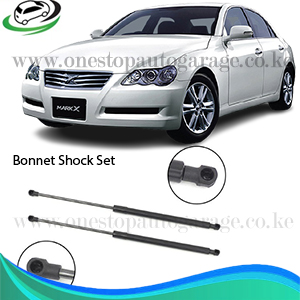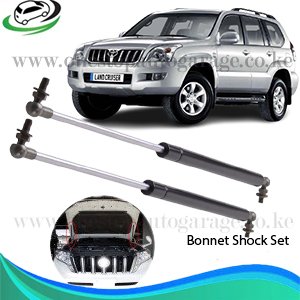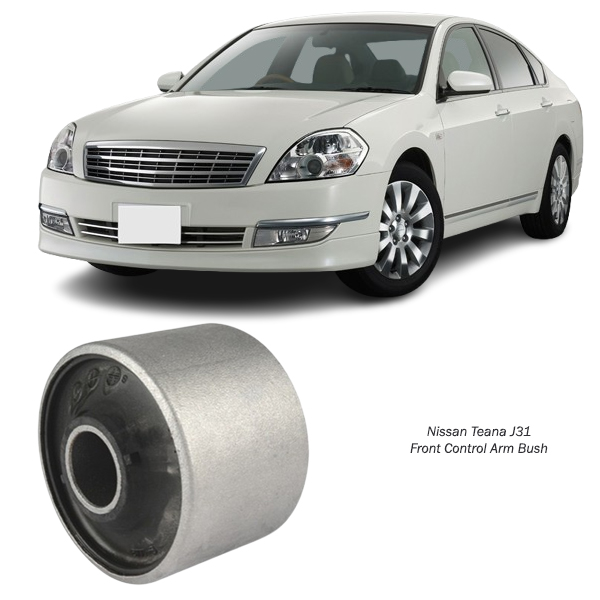-17%
Get Nissan Teana J31 Front Control Arm bush 54570-CA000 in Kenya
The front control arm bushing is an essential part of a vehicle’s suspension system. Often overlooked by vehicle owners, these bushings play a vital role in ensuring smooth and stable handling, reducing road noise, and maintaining overall driving comfort. The front control arm bushings connect the control arms to the vehicle’s frame, allowing the suspension to pivot smoothly and absorb shocks from road irregularities. In this guide, we’ll dive deep into the function, components, types, maintenance, and signs of wear for front control arm bushings.
1. What is a Front Control Arm Bushing?
The front control arm bushing is a component of the suspension system that attaches the control arm (also known as the “A-arm”) to the vehicle’s frame or subframe. The control arm connects the vehicle’s wheels to the chassis, enabling the wheels to move up and down while keeping them aligned to the frame. The bushing acts as a cushion between the control arm and the frame, allowing controlled movement and reducing metal-to-metal contact. This cushioning absorbs road impacts, reduces vibration, and enhances ride comfort.
Each front control arm generally has two bushings: one at the front and one at the rear. Together, these bushings allow the control arm to pivot smoothly and provide flexibility while maintaining alignment.
2. Functions of the Front Control Arm Bushing
The primary functions of the front control arm bushing are:
a. Vibration Dampening
The rubber or polyurethane material of the bushing absorbs shocks and vibrations from road irregularities, reducing the amount of vibration transmitted to the vehicle’s cabin. This makes for a more comfortable ride by minimizing the bumps and jolts felt by passengers.
b. Noise Reduction
Control arm bushings help in reducing noise generated from suspension movement. They absorb the noise caused by friction and metal contact between the control arm and vehicle frame, resulting in a quieter ride.
c. Maintaining Wheel Alignment
Control arm bushings hold the control arm in place and allow it to pivot without losing alignment. This helps keep the wheels properly aligned, ensuring better steering and handling. Proper alignment also contributes to even tire wear and improved fuel efficiency.
d. Enhancing Stability and Handling
The bushing ensures that the wheels stay firmly grounded, enhancing overall stability and handling. When driving over uneven terrain, the bushing maintains the position of the control arm, preventing excessive movement and enabling the driver to have better control over the vehicle.
3. Components of Front Control Arm Bushings
While the design of front control arm bushings can vary based on the vehicle and manufacturer, they generally consist of the following components:
a. Inner Metal Sleeve
The inner metal sleeve is usually made of steel or aluminum and fits around the bolt that secures the bushing to the frame. This sleeve provides structural strength to the bushing, allowing it to withstand stress and torque.
b. Rubber or Polyurethane Core
This is the main body of the bushing, which sits between the inner and outer sleeves. The core material is generally rubber or polyurethane. Rubber bushings provide a softer ride and greater shock absorption, while polyurethane bushings are more durable and responsive but offer a stiffer ride.
c. Outer Metal Sleeve
The outer metal sleeve encases the rubber or polyurethane core, holding it in place and securing it to the control arm. This sleeve helps in absorbing the road forces and prevents the bushing from coming out of alignment.
4. Types of Front Control Arm Bushings
There are several types of front control arm bushings based on material and design:
a. Rubber Bushings
Rubber bushings are standard in most vehicles. They offer excellent vibration dampening and a smoother ride. However, rubber bushings tend to wear out more quickly, especially in harsh driving conditions, as rubber is susceptible to deterioration from heat, oil, and environmental factors.
b. Polyurethane Bushings
Polyurethane bushings are stiffer than rubber bushings, offering greater durability and responsiveness. They are often used in high-performance or heavy-duty applications due to their resistance to wear. While they provide better handling, they may transfer more road noise and vibration into the vehicle cabin.
c. Hydraulic Bushings
Hydraulic bushings are filled with fluid to improve vibration damping and reduce noise. They are typically found in luxury or high-performance vehicles and offer a premium ride quality. However, hydraulic bushings are more expensive and complex to replace.
5. Maintenance and Replacement of Front Control Arm Bushings
a. Regular Inspection
Front control arm bushings should be inspected regularly, especially if the vehicle is subjected to harsh road conditions, high mileage, or aggressive driving. Signs of wear, such as cracks, deformation, or leakage (in hydraulic bushings), indicate the need for replacement.
b. Replacement Process
Replacing front control arm bushings requires specific tools and expertise, as improper installation can affect vehicle handling and safety. The basic steps include:
- Vehicle Elevation: Use a jack and stands to safely lift the vehicle, giving access to the suspension components.
- Remove the Control Arm: Disconnect the control arm from the frame and wheel hub.
- Remove the Old Bushings: Press out the old bushings from the control arm using a press or appropriate tools.
- Install the New Bushings: Press in the new bushings carefully, ensuring they are aligned and fitted correctly.
- Reinstall the Control Arm: Secure the control arm back to the frame and hub and tighten all bolts to the manufacturer’s torque specifications.
c. Lubrication
Polyurethane bushings should be lubricated periodically to prevent squeaking. Specialized grease is used to lubricate the bushing, reducing friction and prolonging its life.
d. Wheel Alignment
After replacing the control arm bushings, a wheel alignment is necessary to ensure proper suspension geometry, as the new bushings may alter the angle of the wheels.
6. Signs of Worn Front Control Arm Bushings
Worn front control arm bushings can lead to various handling and safety issues. Here are some common signs that indicate a need for replacement:
a. Clunking or Knocking Noises
If you hear a clunking or knocking sound from the front suspension, especially when going over bumps or making turns, it may be due to worn control arm bushings.
b. Vibrations in the Steering Wheel
Excessive vibrations in the steering wheel, particularly at higher speeds or on uneven surfaces, can be a sign that the control arm bushings are worn or damaged.
c. Poor Handling and Steering Response
If the vehicle feels loose or unresponsive while steering, it may indicate a problem with the front control arm bushings. Worn bushings cause play in the suspension, leading to imprecise handling.
d. Uneven or Premature Tire Wear
Misalignment due to worn control arm bushings can cause uneven or accelerated tire wear. If you notice unusual tire wear patterns, it’s a good idea to have the bushings checked.
7. Advantages of Healthy Front Control Arm Bushings
Maintaining the health of your front control arm bushings is crucial for the overall performance and longevity of the vehicle. Benefits of well-maintained bushings include:
- Improved Stability: Healthy bushings keep the suspension stable, enhancing handling and control, especially during sharp turns or sudden maneuvers.
- Reduced Vibration and Noise: Fresh bushings minimize vibrations and reduce cabin noise, creating a smoother and more enjoyable ride.
- Better Tire Longevity: Properly functioning bushings keep the wheels aligned, which promotes even tire wear and extends tire life.
- Enhanced Safety: Worn bushings can lead to steering instability, compromising vehicle safety. Replacing them ensures safer handling.
8. Common Causes of Control Arm Bushing Wear
Control arm bushings experience significant stress and wear due to their constant movement and exposure to road elements. Factors that contribute to bushing wear include:
- Environmental Exposure: Extreme temperatures, road salt, and moisture can degrade rubber bushings over time.
- Aggressive Driving: Frequent hard braking, rapid acceleration, and aggressive cornering put additional stress on the bushings.
- High Mileage: Regular driving, especially on rough roads, can accelerate bushing wear as they absorb more shocks and vibrations.
Conclusion
The front control arm bushing is a small but vital component that enhances vehicle stability, handling, and ride comfort. Proper maintenance, timely inspection, and replacement when necessary are essential for ensuring safe and responsive driving. By understanding the importance of control arm bushings and recognizing signs of wear, vehicle owners can enjoy improved vehicle performance and extended suspension life.
Follow us on Facebook for more parts.



